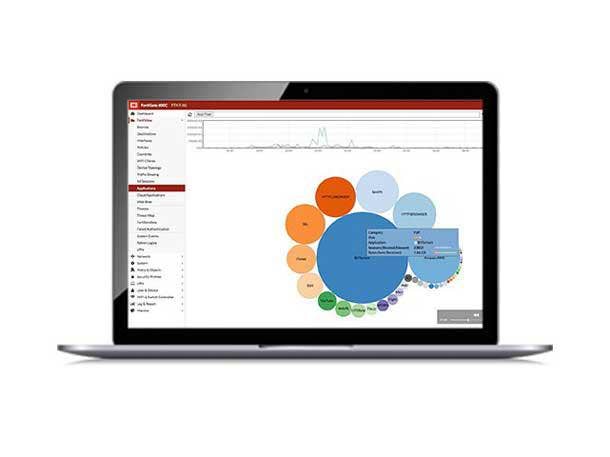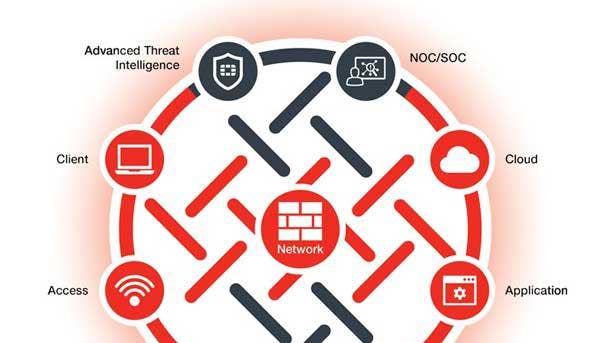6 Biggest Fortinet FortiOS Updates You Need To Know

Securing The Network
Fortinet's flagship FortiOS operating system has more than 300 new features and capabilities, allowing for better protection to be delivered from the network core to the edge and from multi-cloud environments to the IoT ecosystem.
FortiOS 6.2 pursues a security-driven networking approach, integrating networking and security much more closely together rather than having them positioned as separate organizations or architectures, said John Maddison, Fortinet's EVP of product and solutions. This is important because as the traditional edge disappears, anything that has an IP address could now be an edge in a company's network, he said.
Building a layer of security on top of an already-existing network will result in an infrastructure that's too complicated and slow-moving, Maddison said. But integrating networking and security together means the capabilities can be delivered in a single device rather than from separate devices or connectors, according to Maddison.
Here's a look at six of the most significant FortiOS updates announced during the company's Accelerate 19 event in Orlando.

6. Security Fabric Continues To Expand
As recently as a few releases ago, Maddison said only a couple of Fortinet's products were part of the company's Security Fabric offering suite. But as the products become more mature, Maddison said Fortinet wants to ensure they're integrated into the Security Fabric so that customers and partners have more visibility across the entire attack surface.
FortiOS 6.2 increases the number of Fortinet products that are part of the Security Fabric from 12 to 18, Maddison said, adding tools like FortiCASB-cloud that have become increasingly important to customers. Other products that are now part of the Fabric include: FortiADC for application delivery control; FortiToken for user and device authentication; and the company's VDOM virtual domain.
Maddison would eventually like to see all of Fortinet's products be part of the Security Fabric.

5. More SD-WAN Functions And Services
The Fortinet Security Fabric's enhanced SD-WAN capabilities allow customers to achieve higher performance for business-critical applications by providing cost-effective connectivity for the enterprise branch.
Volatile WAN connections for unified communication applications can be more easily remediated by using Forward Error Correction, Fortinet said. Plus latency can be eliminated and performance can be enhanced by aggregating overlay bandwidth sharing between multiple connections, according to the company.
Meanwhile, Fortinet said high-speed application recognition is intended to accelerate packet steering, ensuring that clients always have the best user experience and application performance. And on-demand WAN bandwidth measurement coupled with an overlay controller should make it easier to manage large and complex connectivity issues, according to the company.

4. Multi-Cloud Capabilities Enhanced
FortiOS 6.2 offers full CASB (cloud access security broker) capabilities for not only virtual machines, Maddison said, but also Office 365 and API security components in the cloud. Maddison said APIs will be extremely important going forward to enable products to operate the same way in the cloud as they do on-premise.
FortiCASB-cloud provides connections to Google's APIs in a systematic manner to avoid configuration errors, Maddison said. The capabilities Fortinet built organically are similar to what competitor Check Point got through its purchase of Dome9, and Palo Alto Networks obtained through its acquisitions of Evident.io and RedLock, according to Maddison.
Maddison said Fortinet's decision to build its own cloud capabilities organically rather than going the M&A route simplifies integration with the Security Fabric.

3. Ecosystem Opened To More Technology Partners
Fortinet has opened more APIs to customers and partners, Maddison said, adding more connectors and expanding to include additional companies and platforms. Customers and partners have many options in the market, Maddison said, and therefore might not choose to install all elements of the Fortinet Security Fabric.
It's important to customers that their security vendors work together and play nicely, Maddison said. For this reason, Maddison said Fortinet has doubled down on open ecosystem integrations, meaning that a technology partner can either integrate their management system into Fortinet's or vice versa.
For instance, Maddison said some Fortinet customers and partners are already using Symantec Endpoint Protection (SEP) and aren't willing to take that out and replace it with the company's own FortiClient endpoint protection tool. So the company formed a tight integration with SEP to ensure the right level of anti-virus protection was in place and apply relevant policies on the network, according to Maddison.

2. Automation Features Significantly Expanded
FortiOS 6.2 automates provisioning and operations to streamline the implementation of new systems as well as updates and changes to policies, Maddison said. The company's security rating feature can automatically implement best practices in the background, according to Maddison, and is capable of both checking for certain best practices as well as fixing any shortcomings automatically.
On the other side of the coin, Maddison said FortiAnalyzer has made it possible to sift and filter through information in a user-friendly manner, and quickly analyze any issues that are found. Fortinet has also built out connectors with ServiceNow and different SOAR (security orchestration, automated response) systems to provide more detailed information, according to Maddison.
The integrations with different SOAR companies will enable Fortinet to extract information out of the SOAR system and fit it into Fortinet's ecosystem through APIs and connectors, Maddison said.

1. Artificial Intelligence Moves Beyond Detection
Fortinet is using artificial intelligence for more than detection, Maddison said, and is now applying AI methodologies and technologies across all FortiGuard services. AI-driven security from FortiGuard Labs receives data from more than four million firewalls, some of which receive terabytes of traffic each minute, Maddison said.
The artificial intelligence engine takes all the information obtained from the sensor and applies it in the cloud, Maddison said. And Fortinet makes it possible to apply machine learning separately to specific attack vectors such as anti-virus, intrusion prevention systems (IPS), and wide-area networks (WAN), according to Maddison.
When AI is applied individually to each of those services, Maddison said information can be sent back to the control point or sensors to apply policies or intelligence and make a decision.